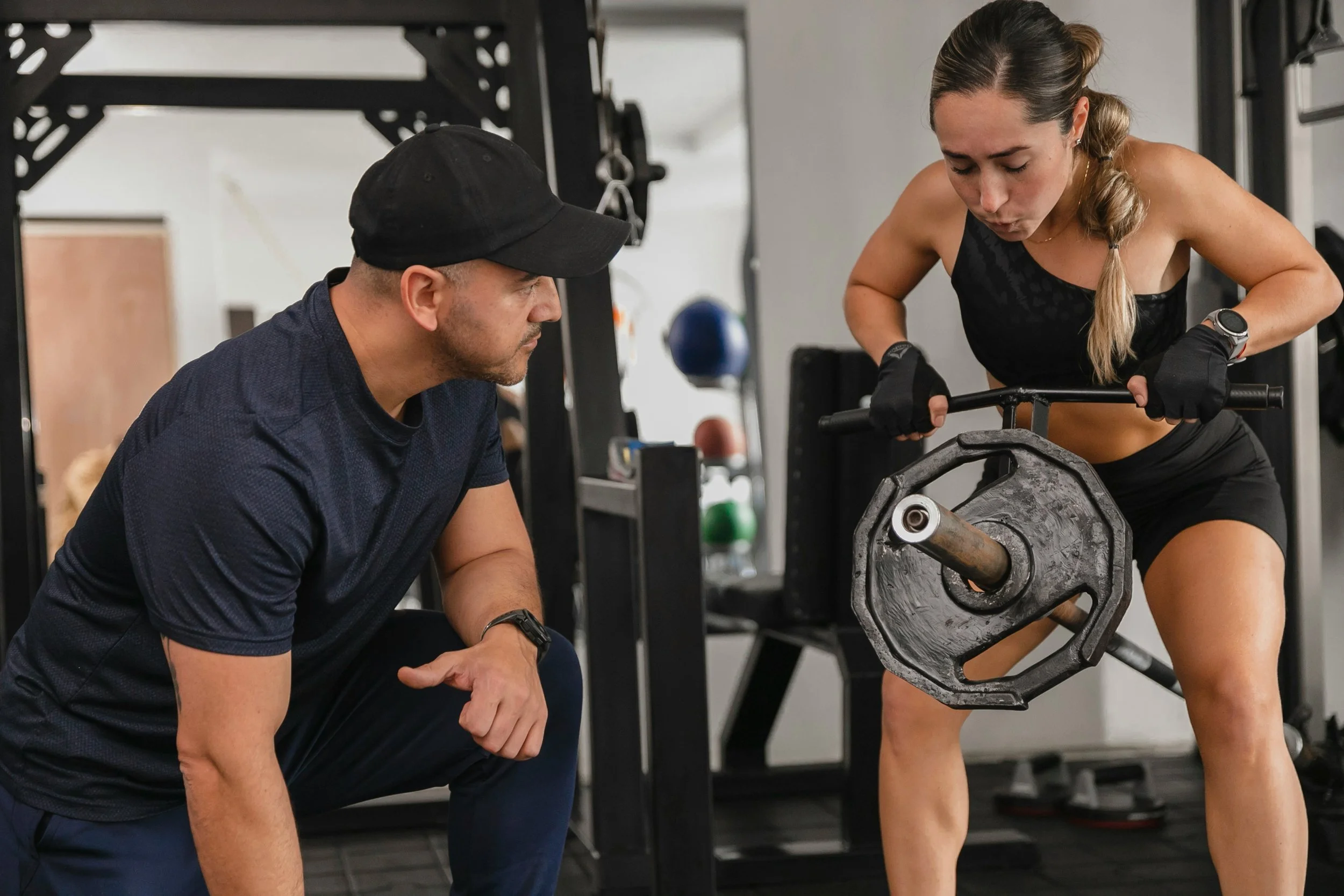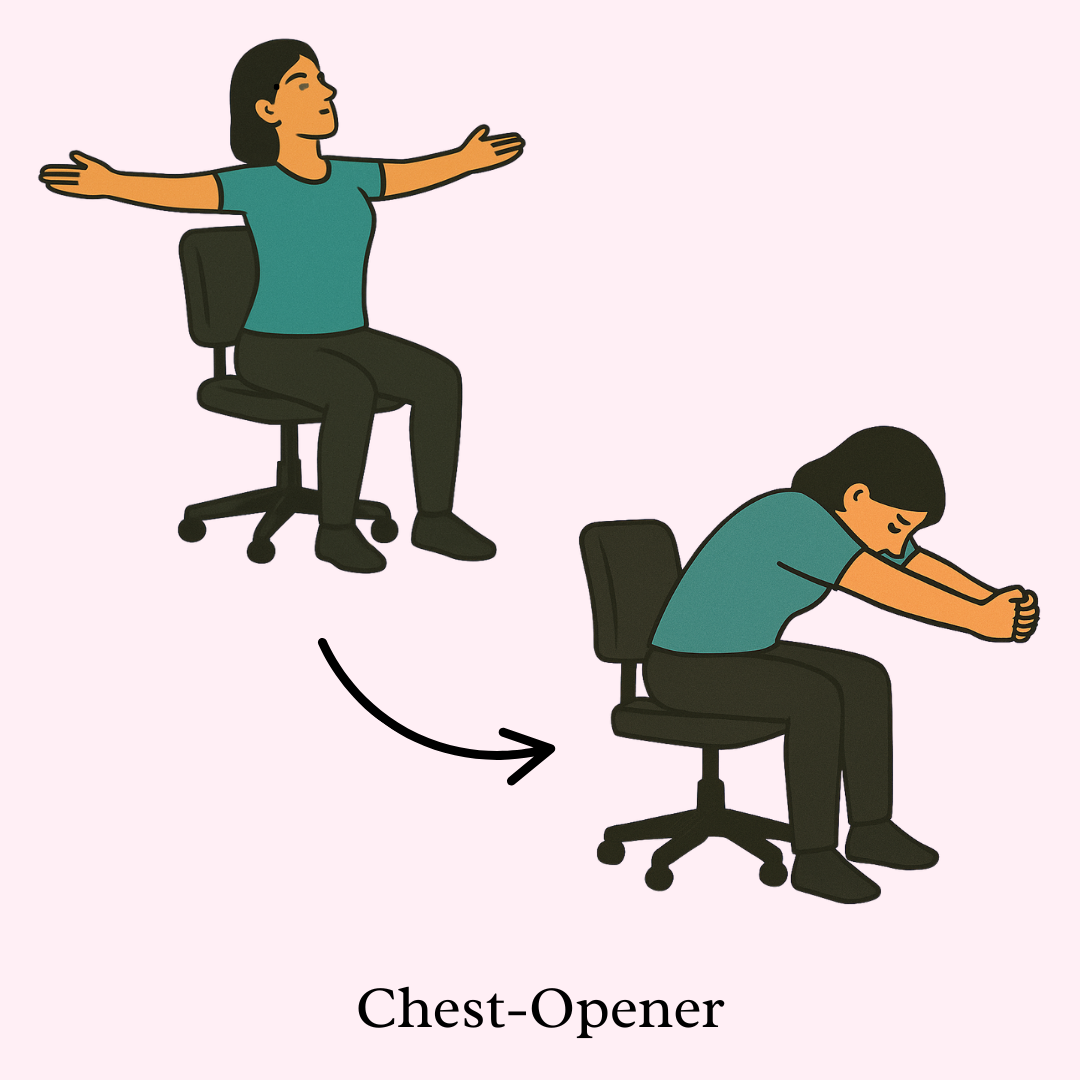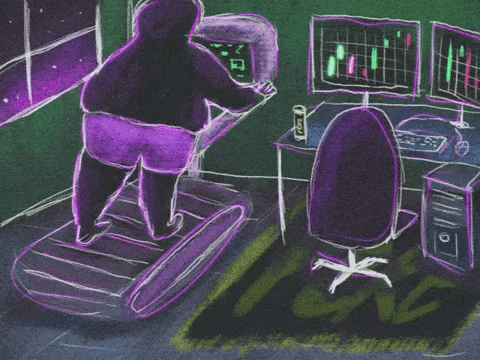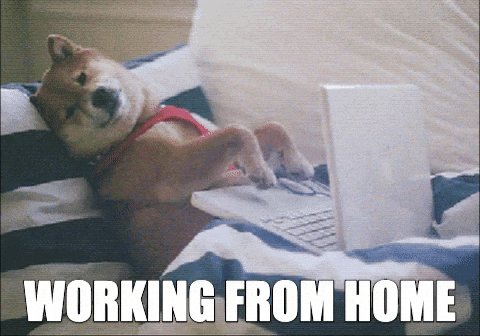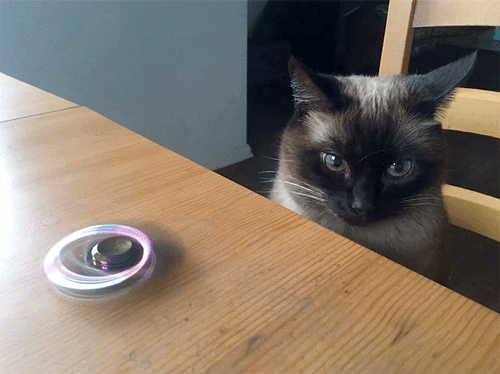Fit to Work Newsletter
Past Issues
Nov 25, 2025 — Issue 11
Hey FTWer!
Stop waiting for your AWOL motivation.
When's the last time you skipped a workout, or a run, or a yoga class, or a meditation because you weren't motivated to do it?
For me, it was earlier this week. I've also recently skipped writing, studying, and cleaning because the spark of desire for it just wasn't there. (No desire to clean? Unheard of!)
Obviously, the idea that we need to stop relying on motivation to get things done isn't exclusive to fitness. It comes up all over our lives and can lead to just as much guilt and stress when we had the time or energy, just not the inclination.
We “do it anyway” when it comes to going to work and doing the
laundry—why are we so resistant to that approach for other tasks?
All too often, that feeling bad leads us to try to double down.
One of the owners of Tactic—a functional nutrition and fitness company whose Instagram is a treasure trove of inspiration—posted a great reel about this recently.
The problem with adding the minutes you missed today onto tomorrow's run, say, is that if you weren't motivated to run 20 minutes today, you almost definitely won't be motivated to run 40 tomorrow.
Instead, they suggest cutting the time in half. Meant to go for a 30-minute run? Make the next one 15. Supposed to write 500 words today? Shoot for 250 tomorrow.
You can always work your way back up, but a shorter practice you actually do will always benefit you more than a longer one you end up skipping.
So, in the spirit of making our tasks a size we'll actually do, I've got a three-exercise workout for you today. You only need one (or two) medium-weight dumbbells, and you can wrap up 3 sets in just 15 minutes or so.
I walk you through the exercises in a quick video:
(Need a modification I don't show, including no weights? Drop me a line!)
Nov 11, 2025 — Issue 10
Hey FTWer!
How much “doing nothing” have you been doing lately?
I'm not calling you out; I hope you're finding time to do nothing.
I know that I'm not good at this. There's always something on the go, even if it's something deceptive in its nothing-like-ness, like reading on the couch. I also know I have a problem with “multitasking”…
Thing is, research shows humans can't actually multitask.
Unlike a computer, our brains can't run multiple tasks simultaneously. When we jump from task to task, it takes us an average of 25 minutes to get settled and focused every time.
According to one researcher, “multitaskers are…terrible at keeping information in their head nicely and neatly organized.” As professionals, that's not our best look.
I often see the evidence and detriments of my task-switching at work, but it wasn't until this weekend that I realized how deeply those habits have seeped into my life.
I was sitting on the couch, working on a cross-stitch piece and pausing between stitches to try to finish a chapter of my novel.
I mean—what possible benefit could that have? All it did was make me half as fast at both activities (and twice as likely to stab myself).
We need to get better at doing nothing. Studies show that because kids aren't bored anymore—they always have a tablet to look at, there's always an extracurricular to get to— they aren't forced to come up with fresh and creative ideas. The ideas that can lead to amazing advances and discoveries, both personal and world-altering.
This is why today, instead of sharing physical exercises or stretches, I'm going to lean on my yoga background and share three simple mindful pause practices.
Mindful Pause #1: The 20/20/20 Rule
How it works: Set a recurring 20-minute timer. When it goes off, shift your gaze to something 20 feet or further away (look out the window or spy on your coworker across the room). Maintain that focus for 20 seconds.
What it does: Staring at a screen just 20 inches from our faces causes eye strain and fatigue. Because certain muscles must tense to focus on closer objects, if we don't take breaks, over time these muscles struggle to relax, which means it takes us longer to focus farther away.
Mindful Pause #2: Box (or Triangular) Breathing
How it works: Set a timer for 1 to 5 minutes (start small and work your way up).
1. Closing your eyes to softening your gaze, take a deep inhale through your nose, counting to four.
2. Hold that breath for a count of four.
3. Release the breath for a count of four, through your nose or mouth.
4. Hold the air out for a count of four.
Alternatively, remove the final step and go back to step 1 (make a triangle instead of a square). The box breathing method is meant to calm and focus us. I personally find holding the breath out stresses me a bit, so I prefer to skip that one!
What it does: Focusing on your breath is a quick mindfulness activity that forces you to be in the moment. Breathwork practices like box breathing help ease anxiety and improve mood. For even more anxiety relief, make your exhale longer than your inhale. This instantly stimulates the vagus nerve and slows the heart rate.
Mindful Pause #3: Body Scan
As someone who sucks at sticking with any kind of meditation practice, I've found the body scan to be the easiest and most rewarding method.
How it works: Take a comfortable seat—in a chair or on the floor—and close your eyes. Draw your focus to the crown of your head. From there, let your attention move down, noticing each body part and consciously relaxing it as you do. Move slowly, all the way from the top of your head to the soles of your feet.
For a quick, 6-minute guided body scan, click the link below:
What it does: A body scan is a method of mindfulness meditation that helps you notice spots of tension in your body and consciously relax them. Over time, you develop greater awareness of where tension and relaxation exist in your body, changing how you relate to these sensations. The practice can ease stress and bring clarity.
Oct 28, 2025 — Issue 9
Heya, FTW Team!
First of all, did you hear about the Fit to Work podcast?
Episodes will be dropping on Tuesdays in between newsletter issues. Listen and subscribe here:
LISTEN TO EPISODE 1 ON SPOTIFY | (Apple Podcasts link coming soon)
Alright—let's get to today's topic! It's a bit longer than usual, but I promise there are exercises at the end :)
(If you just want the moves, just scroll down til you see the green FTW dots!)
What kind of leader do you prefer?
As a trainer, I know my instruction approach isn't for everyone. I deliberately brand myself as fun, motivating, and encouraging—it's not my style to stand over you while you pump out bench presses, screaming “Give me one more rep, you worm!,” and I proudly proclaim that I don't assign burpees.
But some people thrive on that exacting encouragement, and some people love burpees. (If you're one of the latter, it's fine. Just…slow down and really make sure you're nailing each part with great form—the intensity and complexity of that exercise mean it can cause real injury, acutely or over time.)
Different “coaching” preferences come up at work, too. Some of us want weekly check-ins with our managers, while others prefer to follow up only if they have questions. You might love the rigid tracking of a JIRA board, while your co-worker has to keep reminding himself to keep it up to date.
As long as everyone's on board, there's nothing wrong with any of these approaches.
But there is such a thing as objectively negative coaching language, both in the office and at the squat rack.
Four Wrong Moves That Raise My Red Flags (and my blood pressure)
They draw unnecessary comparisons. “My Tuesday client could do an extra set.” “When Janina ran this project, we didn't hit these roadblocks.”
They aren't willing to adjust for you. “Screaming at my clients has always gotten results before.” “I expect you to only come to me if something is on fire.”
They don't get the difference between motivation and intimidation. “If you can walk tomorrow, you need to add weight to your squats.” “If you can't handle the pressure, you're in the wrong job.”
They give orders, not collaborative feedback. “I scheduled push-ups today, so we're doing push-ups, even if your shoulder is twinging.” “This doesn't need to be a discussion. Just get it done.”
Yikes. Did you get the same uncomfortable feeling in your stomach reading those as I did writing them?
These examples are glaringly bad, but negative leadership can show up in more subtle, sinister ways, too. If a specific instance jumps to your mind, drop me a line—a cringe shared is a cringe diminished, right?
Keep an eye out (for yourself and for your friends and coworkers). If you see bad coaching, call it out if you can, or find a way to distance yourself from it. The world is a fraught enough place right now; we don't need to encourage more crappy supervisors on top of it.
Your Work-Week Movement Snacks
Here's your Fit to Work assignment for this week! See if you can slip at least one of these moves in each day—and let me know how it goes!
Glute Bridge
Benefits: Resets your spine; gets the blood pumping and muscles moving in every part of your legs; mild hip flexor stretch.
Lie on your back with your knees bent, heels about a foot from your butt.
Give your chin a slight tuck toward your chest; just enough to keep your neck nice and long. Lay your hands flat alongside you.
Flatten your low back to the ground by tipping your pelvis toward your belly button.
Keeping that pelvis position and pressing through your heels, slowly lift your butt up off the ground. At the top (whatever that means for you), pause and squeeze your glutes.
Slowly lower, thinking of rolling back down through each vertebrae from top to bottom.
Repeat 10 times.
Not hard enough? Try walking your feet a little further from your butt for more hamstring engagement. Still too easy? Do them one-legged!
Lunge with Twist
Benefits: Loosening up a spine that has been static all day; waking up the glute, quad, and calf of the forward leg; stretching the hip flexor of the back leg; resetting posture.
Step into a high (knee raised) or low (knee on ground) lunge.
Tall torso; think of the crown of your head stretching up to the ceiling.
Raise your arms up overhead, shoulders out of your ears.
On an exhale, rotate your torso toward your forward leg, lowering your arms into a T as you do.
On the inhale, rotate back to centre, raising your arms.
Repeat 5-10 times, then repeat on the other side.
Tricep Dip
Benefits: Stretches the chest and strengthens the back (essential for desk workers, who sit in the opposite position all day); strengthens the shoulders and triceps (backs of the upper arms).
Video walk-through.
Sit on a sturdy chair that is against a wall or a ledge.
Placing your hands on the seat under your butt, walk yourself away from the chair. The further your feet are from the chair, the more challenging this exercise will be.
Slowly lower your butt until your arms are bent 90 degrees. Slowly raise back up.
Repeat 10 times.
Have a wonderful week full of inspiring leaders and fun movement!
Oct 13, 2025 — Issue 8
Heya, Team FTW,
Ever noticed how many fitness and sports-related terms make their way into corporate idioms?
In celebration of how perfectly movement and deskwork intersect, let me introduce the lineup for this year’s Quarterly Qualifiers!
Get ready for…
1.
Innnn this cornerrrrr (can you tell I don’t actually watch the Olympics?), the Deskletics are already warming up to Run a Meeting.
The move: High Knee Hugs
(Video how-tos for all the moves are right here.)
Why it’s great: You’re releasing that tight hip flexor in the standing leg while finding a deep stretch for the hamstring in the bent leg. Squeezing activates those lazy glute muscles, and your posture gets a reset when you’re forced to stand up tall.
What to do: With your right hand on the wall or the edge of your desk for balance, hug your right knee in toward your chest. Press down firmly through the standing leg and squeeze the glute. Draw your spine up nice and tall. Hold for a count of 5. Switch sides.
Repeat 3 times.
2.
Next up: They’re the first to arrive at every meeting with the C-Suite, and they always have follow-up questions—the Series A Sportsters are here to Push Up a Deadline.
The move: Shoulder Sliders
Why it’s great: You’re opening your chest by pressing your shoulders back and strengthening back and shoulders at the same time (which fights that over-the-keyboard slouch). This move is also proven to improve shoulder mobility and rotation.
What do you: Find an open bit of wall and stand or sit tall against it, pressing your shoulders back. Tuck your chin slightly. Tuck your elbows to your sides and bend them, so the backs of your hands are against the wall. Doing your best to keep your upper back against the wall, slowly slide the backs of your hands up the wall and back down. Watch it here.
Repeat 5 to 8 times.
(Note: You can do these lying down on the floor, knees bent, if they don't work for you against a wall. Keep practicing and you'll get there!)
3.
Logging on at ten minutes past 9:00, we have the Overslept Outsourcers climbing the ranks to Punch the Clock.
The move: The Twist n’ Press
Why it’s great: Sitting up straight is a nice reset for your spine, and rotating is an essential core-based movement pattern. By pressing with the heel of your hand rather than making a fist, you’re performing wrist extension to counteract the flexion it sits in during the day, and getting a nice extra stretch in that forearm. We do this one sitting to make sure you move from your core, not your hips.
What to do: Sitting up tall, draw your belly button toward your spine to wake up your core. Raise your hands like you're waiting to catch a basketball, palms facing in at shoulder height. Rotate your torso to the right—thinking of moving with your core, not your shoulders—and your left arm to the right as well, pressing your left palm out as you twist. Return to centre with control and repeat on the other side. Watch it here.
Repeat 5 times.
4.
And finally, they put the ohm in work from home. Namaste Late Today are ready to Balance the Books.
The move: Tree Pose
Why it’s great: Standing when you’ve been sitting for hours will get the blood moving, gently stretch your hip flexors, and gently activate those lax glutes and hamstrings. Balance requires a degree of calmness and concentration, so it’s like a quick midday meditation. And your core, ankles, and feet—all things that don’t get much of a workout when you’re sitting—get stronger with every single-leg balance!
What to do: Stand beside your desk or near a wall. Before you lift your left leg, bring your weight into your right foot. Press down into the ground through your whole foot and unlock your knee. At the same time, pull the crown of your head toward the ceiling. Then, raise your left leg, bringing your foot to your ankle, shin, or inner thigh (depends on flexibility). Squeeze your standing leg (glute and thigh) as you balance. Watch it here.
Hold for 10 to 30 seconds on each side.
Sept 30, 2025 — Issue 7
Heya, workstar!
I'm going to take us to a more serious place this week.
Working and working out have some things in common. For instance:
A focus on an end goal;
Proven benefits from sticking with it;
A correlation between how much you enjoy it and how much effort you'll put in;
The danger of a toxic culture.
That last one's no joke.
Let me first acknowledge that there are plenty of great workplaces and plenty of great gym mindsets, communities, and methods. I am not calling out anyone in particular here, and I honestly don't even have any specific company or organization in mind.
But the toxic environment—for both fitness folks and workers—is a real thing.
Verbal harassment that crops up in the cubicle or at the squat racks;
A demanding manager/coach who won't respect your boundaries;
Peer-to-peer bullying from fellow gymgoers or coworkers;
“Motivating” with fear (if you don't get this project finished/hit this PR, you're a failure).
It doesn't matter if you're spending time in an open-concept office or a membership-only weight room—these are flashing neon red flags to start looking for something else.
And yes, I say that knowing full well it's not an easy task. The job market is plain dreadful, and if you only have one fitness facility in your area, switching could add hours to your commute (or, if you're like me, result in you just not going).
Thoughts on Tackling Toxicity:
Remember that boundaries are about what you will do, not what you want them to do.
- Isn't a boundary: “Don't give me more work than I can handle.”
- Is a boundary: “I will require a minimum of three business days to focus on and complete this project.”
Document the problems. You might feel like you're whining or overthinking it, but write down the date and an explanation of each interaction that makes you uncomfortable. Even if it's the first time and you don't really think there will be more issues. When we hear stories about harassment cases, this comes up a lot—how helpful it was that the claimant kept a detailed journal of events.
If finding another workplace/gym isn't an option at the moment, make time for self-preservation strategies. This might look like using more of your vacation days, exploring fitness options that don't require a facility, and talking to someone close to you about what's going on. (If you need help with a gym-free fitness plan for any reason, reply to this email. I'm always here as a sounding board for a crappy work/workout situation, too. )
Be mindful of toxic environments, wherever they might crop up. If it's your own experience, start finding even small ways you can make life a little better for yourself right now. If you know someone going through it, offer support however you can.
Circling Back
A reader reached out the other day to tell me about their workweek movement win: “I have been doing evening yoga every night this summer, and it has made such a difference in how I'm feeling in the mornings. Two yoga practices for 10 to 15 minutes each per day. That's my new recommendation for anyone hitting their mid-40s.”
Isn't that awesome? I'd say it's a great addition for anyone hitting any age! Whether it's yoga, or walking, or pushups, or dance breaks, moving your body more in ways that feel good can only help you.
What movements have you been testing out?
Sept 16, 2025 — Issue 6
Hey, Team!
How are your workday movement goals coming along?
For me, it doesn’t seem to matter how focused I am on fitness that week. If I’m teaching three classes, getting in a workout or run every day, actually sticking to a dedicated yoga routine….when I shift gears to a day of desk work, any notion of getting up and moving throughout those sedentary eight hours just drops—pLoP!—right out of my brain.
Maybe you can relate? It’s like the habits we get really good at just don’t transfer over when we get into a mindset or position or environment in which they weren’t explicitly built.
Research tells us that habits and memory are context-dependent, so maybe if I didn’t develop my movement habit directly in situ during an actual desk work day, it makes sense—cognitively, behaviourally, and frustratingly—that it doesn’t kick in on a desk workday.
But also, “habits are more context-dependent than goal-directed actions,” so consistently reminding ourselves of the outcomes of incorporating movement (less back pain, better sleep, reduced eye strain) could help us actually remember to do them until the habit solidifies in this fresh context? (Source)
I guess that’s basically the whole premise of this newsletter, right?
To help the process along (because we’re all in this together), I think the best thing is to keep inundating you with easy-to-accomplish movements. If even just one in ten triggers an itch to move, then I’ve succeeded!
So, without further ado, here are 5 “movement snack” ideas for your busiest workday. I’ve cut the ones that require using your desk as a base because I bet some of you, like me, don’t have a solid wood beast of a tabletop.
Reply to this email to let me know which one is your favourite. And don’t forget to save and share the cards below. I know they’re ridiculously, obviously AI-generated, but still—pin ‘em to your whiteboard, stick ‘em in your day planner, staple ‘em to your dog’s collar. Whatever moves you!
Let’s go!
1. Re-Energizing Seated Pigeon Pose
Roll your chair back a bit.
Place the right ankle on the left thigh, just above the knee
Sit up straight and think about pulling the right knee down toward the ground
Move the chest forward (chin parallel to the ground, neck long) til you feel a stretch in the right side of your low back and glute.
Bonus: make pigeon cooing sounds to soothe your sympathetic nervous system ;)
2. Slouch-Correcting Seated Chest Opener
Sitting tall in your chair, open your arms out to the sides.
Press your chest forward and tip your chin up just a little bit. Inhale.
On your exhale, sweep your arms forward and press your mid-back away, fingers pointing forward or hands clasped. Tuck your chin.
Bonus: Inhale through your nose, and make your exhale a nice, loud sigh. Trust me, it’s cathartic.
3. Blood-Pumping Pulse Squats
Set your feet about hip-distance apart.
Lower your bum straight down, and aim to have your knees track over your feet as you do (you might need to turn your feet out a bit)
At the bottom of your squat (whatever that means for you), move up and down slowly three to five times.
Stand back up and repeat.
Bonus: Duck walk back to your desk and do the next hour of work without your chair. (Oh my gosh, this one is a joke…)
4. Power Pose Toe Taps (ChatGPT could not understand how to show this move )
Stand with your feet wide and your arms outstretched. Take up space! Power pose!
Tense your belly like someone’s gonna punch you.
Rotate your torso to the right, so your right arm moves behind you and your left moves in front.
As you rotate, keeping a long spine, lean forward and reach toward your left fingers toward your right toes. They don’t have to touch.
Stand back up and repeat the other way.
Bonus: Every time you stand tall, roar like a lion (I’m serious this time).
5. Jumping Jack-of-all-Trades
You know this one. Arms go up as legs go out. Aim for 20-30 seconds every hour-ish.
Low-impact option: as you raise your arms, tap first one foot out to the side and then the other.
Bonus: Sit back down and finally send that message to Karen telling her no, you won’t have time to do her job for her.
Sept 1, 2025 — Issue 5
Hi, Team,
Let me climb up on my plyo box for a sec. I want to talk about how flexible hours and remote work policies impact our movement. (Actionable suggestions at the end!)
Flexible work hours have been a thing for a while now. It started in earnest with the pandemic and continues for various reasons, like retaining staff who dig the remote scene, making things easier for working parents, and accommodating workers’ differing periods of productivity. We’re also seeing a slow acceptance of the truth that measuring work quality strictly in desk hours is nonsense. (Can you tell I write for a podcast that explores better business practices?)
One potential benefit of flexible work hours is more opportunity to work out. If there’s no hope once the kids are home or you hate how hectic your gym is before 9 am, now you have the option to slip some movement between meetings…Right?
Lots of articles list easier access to fitness as a possible perk of flexible work, but are workers actually using this somewhat self-directed time in this way?
In 2024, a UK study asked workers to self-report on the benefits of hybrid work. 54% of them said that they were getting more exercise. But a 2018 study found the opposite—people with hybrid work schedules actually sat more.
So, the jury’s out. And that’s probably because there’s a whole lot more to encouraging movement than just a new policy enabling “flexible hours”. Implicit consent isn’t good enough. If you’re “allowed” to leave your desk to work out but you’re slammed with so much work day in and day out that you don’t feel like you can sneak away…what’s a wannabe workout warrior to do?
Companies need to support and encourage fitness in other ways, from literally telling workers they’re welcome to hit the weights at 1 PM to offering additional incentives like gym memberships. I’m not a huge fan of things like workplace step count or pushup challenges, but at least they highlight a supportive company mindset.
All that being said, let’s not overlook the many other health benefits inherent in flexible schedules and hybrid. These policies show signs of increasing employee happiness, which manifests as reduced turnover, sick days, and stress. Employees regularly report sleeping better and eating more nutritiously.
At the end of the day, we need to be the advocates of our own fitness and also accept that life is flipping busy and three hours at the gym isn’t always possible.
I want to hear from you! What kind of flexible work and/or fitness policies does your workplace offer? And if you work for yourself, how does your boss (ie: you) encourage you to get up and move your body, between, before, or after work hours?
A bit of movement motivation for your workday:
A 10-minute bodyweight workout when you can slide it in is always better than not moving because you can’t do a full hour.
Ask your favourite co-worker if you can take your next brainstorming session on the road. Walking meetings don’t just get you moving—research shows they can jiggle loose stagnant brilliance because “natural walking reliably boosts originality and divergent thinking.”
Yes, dancing = workout. Put on a song, practice your Grapevine and your Floss (that one’s passé now, isn’t it?), and get that vital blood flowing to all those extremities. If you try this and afterward get a break in a problem you were working on, reply to this email and tell me about it!
Sources:
Flexible Work: The Impact of a New Policy on Employees' Sedentary Behavior and Physical Activity, Journal of Occupational and Environmental MedicineHybrid working makes employees happier, healthier and more productive, study shows, The Guardian
The Effect of Employee-Oriented Flexible Work on Mental Health: A Systematic Review, Healthcare
What Research Says About the Benefits of Walking at Work, Psychology Today
Aug 19, 2025 — Issue 4
Hi, Team,
When our commute becomes a mere 20 feet, we muddy not just the physical divide between office and home but also the mental divide between Work and Not Work.
(This also goes for taking your office laptop home with you.)
Now, I’m obviously not here to preach the benefits of regular work hours. I think it’s great that we more and more of us can now divvy up our days so they fit with our lives, either because we have mandated flexible work hours or we work for ourselves.
I do think that blindly cramming Work and Not Work hours into one bumpy, 16-hour ball of sitting at our desks or hunching over our phones at the dinner table is less than ideal. So, with that in mind…
Here are three ways you can use movement to help highlight those lines between Work and Not Work, even if your “office” hours no longer resemble anything like 9 to 5.
Put the “Calm” back into “Commute.”
Just because your desk is three meters from your kitchen doesn’t mean you’re limited to a 10-step commute! Scheduling a walk around the block right before you sit down not only gets the blood moving and the mental juices flowing; it also creates a built-in divide between morning routine and workday—minus the tribulation of sitting in traffic.Designate a special EOD Commute Stretch.
I’ll always advocate for more stretching throughout your day, obviously, but what if you picked a specific one just for 5 pm? Seems like it should work similarly to having a regular bedtime routine—the brain begins to recognize that movement as a sign to shut down work mode.
My 15-minute stretch on YouTube might be just the ticket!Make yourself work (out) for that off-hours work.
How much more would you move if you weren’t allowed to sit at your desk outside of your official work hours (to check emails or make a tweak to a project, say) until you did 10 pushups, or jumping jacks, or calf raises?
It’s less about trying to prevent those off-hours work bits—they can relieve anxiety and set you up better for the next day—and more about being mindful. If we stop just plopping down without thinking and instead create a workflow (think of task > do 10 pushups > do work task), we become more aware of those decisions, and we get a bit of movement out of it, too!
4. Bonus: Change your clothes!
This isn’t really physical movement-specific, unless your clothing change involves wriggling out of tight leggings or you balance while you change your socks. But the thrill I get from pulling on sweats at the end of the day is most of the reason I put on “real person” clothes in the first place.
Circling Back
I was recently informed that every tech worker must have a rubber ducky on their desk for companionship. How was I not aware of this?! A reader kindly shared their own buddy, which brilliantly combines this essential buddy with a timer for break reminders!
How flippin’ cute is that?! Thanks, Erika :)
Aug 4, 2025 — Issue 3
Hi, Team,
Let’s talk fidgeting!
Think about the micro-movements you make at your desk every day. If you’re one of the 27% of people who are “habitual fidgeters”, and likely even if you don’t identify as such, you shift and wiggle and bounce when you’re “supposed” to be stationary.
But your mom, the Sunday School pastor, and your first-grade teacher might have been wrong when they demanded you “sit still.”
While you probably want to avoid rattling the whole dinner table with your bouncy knee (my partner calls me on this all the time), in your cubicle or in your WFH space, jiggling your knee, clicking your pen, and bouncing in your seat have health benefits: increasing blood flow, regulating blood sugar, and reducing mortality risk, similar to getting up every 20 minutes or so.
Fidgeting can also help relieve stress and anxiety and improve concentration, which we kind of already knew from the wild popularity of fidget spinners, circa 2017.
Here’s how you can facilitate or offset your fidgeting:
߷ Get a footstool (yoga block, spare dumbbell, edge of another chair), and prop up one foot and then the other, back and forth. It’s handy for shifting your weight when you’re standing, too.
߷ Stock your desk with the cutest stress ball. (Like this one? Or is that kind of creepy?)
߷ Use the digital/physical timer you invested in after the last issue () to remind you to hop up and do 10 jumping jacks. That’s it—just 10 every hour or so.
So, are you a proud fidgeter or still living in the shadow of your parents’ dinner table admonishments? (Go easy on them—they didn’t know and, to be fair, you knocked over the salt shaker a few times.)
Circling Back
Since the last installment of Fit to Work, I’ve had a few people proudly share their step counts with me. I love this!
If you ever want an accountability buddy or a virtual high five or any other kind of fitness-based feedback, just hit reply to the latest issue and share your wins/goals!
July 21, 2025 — Issue 2
Hi, Team,
You’ve probably heard that 10,000 steps/day is essential for fitness.
Maybe you’ve also heard to aim for 3 one-hour workouts a week?
If one or both of these practices don’t feature in your average work week, keep reading.
Getting 10,000 steps has been a hot wellness topic for decades, so it must be true, right?
Thing is, 10,000 steps a day stems from a 1960s Japanese marketing campaign. The company wanted a catchy and memorable number to advertise their new product: a pedometer. The number wasn’t based on scientific research or evidence—it was based on mental stickiness.
Cut to today. Recent studies suggest that the benefits of walking plateau at around 7,500. At this point, you’re likely to experience about as much improved cardiovascular and brain health and greater longevity as you would strutting 3,000 more.
Of course, 7,500 steps is still 5 or 6 km, which is a lot to squeeze into a hectic workday. So, here are some approaches that might make it more accessible:
Instead of shooting for 7,500 steps a day, aim for 50,000-ish per week. A daunting number, I know . But you can get those long strolls (or shopping excursions) in on your days off.
Try the old classics like getting off one bus stop earlier, parking further away, walking to the store instead of driving…These are easier for some living arrangements than others, but you’ll be amazed how quickly the steps add up. Just doing more than you did last week, whatever that looks like, is worthy of .
Think in minutes, not steps. Studies consistently support the idea of 150 minutes of moderate movement per week. That’s like two brisk walks with a friend, a fitness class, and a bike ride with the fam—fairly do-able and maybe even fun, yeah?
You got this!
Cheers,
Shannon
Circling Back
After last week’s email, a reader shared the app they use to remind them to regularly get their butt out of their chair. Thanks, Bryce!
It’s called Take a Break (and there’s a similar-looking Android option). For an analog alternative, I really love my little dodecagon timer.
Thanks for the rec, Bryce!
Hey, Team!
Welcome to Fit to Work. Thank you for being here!
Let’s dive right in and talk about something every desk worker has experienced: sitting. Lots and lots of sitting.
“Sitting is the new smoking,” they said.
“Get a standing desk or perish,” they said.
Now I am the proud owner of an awkwardly heavy desk that I—obviously—responsibly raise for two to three hours of perfect-postured, super-focused work every day!
Haha; juuuuuust kidding.
I did buy my adjustable desk with the best of intentions. But I might feel around for the dusty button once a month or so, mostly when I want to keep the cat from sitting on my lap
(Is the whrrrr of a rising desk the dial-up tone or Skype chime for a new generation?)
If you’re in this boat with me, don’t beat yourself up. Because it sounds like the actual problem is remaining in one position for a long time, not so much whether you’re sitting or standing.
Various studies conclude that changing your position—from small shifts to big ones like standing or kneeling—numerous times per hour can significantly dial down physical discomfort. (Fidgeters, rejoice!)
So, no, you can’t just adopt a permanent shrimp slouch without repercussions.
Think about what your muscles are doing when you sit in one position. Your glutes and quads are perpetually elongated, and your hip flexors and hamstrings are consistently shortened. Is it any wonder our bottoms go numb and the backs of our thighs scream when we try to touch our toes?
Instead of trying to make yourself stand for hours—which probably isn’t any better, especially when you factor in the hard floors, underdeveloped core muscles, and perpetually hunched shoulders that plague so many of us—start by simply expanding your slouching repertoire!
Work-Friendly Fix:
Rather than trying to force yourself to stand while you work, prioritize shifting positions in general. Better yet, set an ongoing 20-minute timer. Get up, shake it out, and grab a glass of water (because you’re probably not drinking enough).
You got this, fellow desker.
Shannon
P.S.
Need a digital “mom” moment to make you sit up straighter at your desk?
Several studies have found that posture can affect both self-esteem and positive mood! This Forbes article rounds up some of the research.

